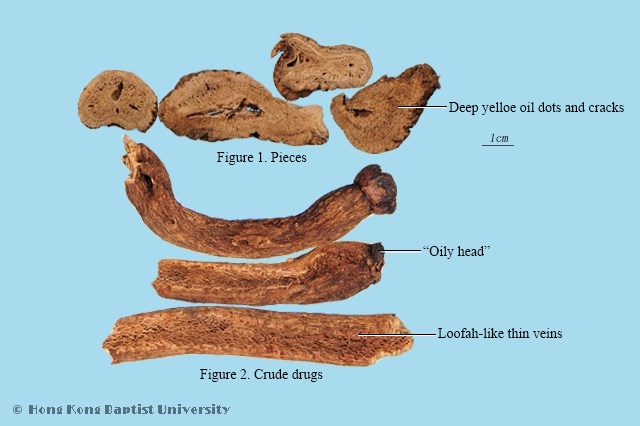Production RegionsPrimarily produced in the Chinese provinces of Sichuan and Tibet.
Macroscopic FeaturesCylindrical, which called Tie gan mu xiang, or longitudinal groove-like sub-cylindrical, which called Cao zi mu xiang; slightly curved, 10~30cm long, 1~3cm diameter. Externally yellowish-brown or dark brown, with relatively thin longitudinal wrinkles; loofah-like thin veins can be seen where the outer skin has fallen off. Root head has black sticky jelly, which is called oily head or pasty head. Light, brittle and easily broken. Fractured surface is yellowish-white or yellow, scattered with dark yellow oil dots and cracks; xylem is relatively wide, sometimes with radial lines or a rotten center. Slightly aromatic odor; bitter taste, sticky when chewed.
Quality RequirementsSuperior medicinal material is hard, thick and with a potent aromatic.
PropertiesAcrid, bitter; warm.
FunctionsMoves qi and relieves pain. apply to abdominal pain, rugitus and diarrhea, rectal tenesmus, bilateral hypochondria, pain in the liver and gall.
Technical Terms'Oily head’: This refers to sticky black substances on the root head of Chuan mu xiang medicinal material. It is also known as ‘pasty head (hu tou)’.
OriginThe dried root of Vladimiria souliei (Franch.) Ling (Asteraceae).
